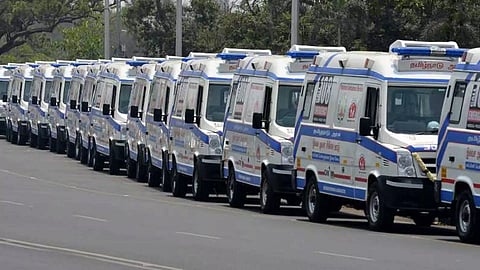

CHENNAI: The response time of 108 ambulances run by GVK EMRI in Tamil Nadu has dropped in rural, tribal and urban areas. The response time until July has increased by 20 seconds in metro areas, while it has dropped by over 1.5 minutes in tribal areas.
While there are several challenges such as difficult terrain, location accessibility, traffic, high demand of emergency response vehicles and the availability of ambulances in highly populated areas, the increase in trauma cases over the years have added to it.
Ambulances have seen the highest improvement in tribal areas with response time dropping from 17.24 minutes in 2021-22 to 15.33 minutes as on July 23, 2023.
The average response time was reported to be 16 minutes in 2022-23.
The response time in rural areas dropped from around 14.53 minutes in 2021-22 to 14.22 minutes last year. Currently, it stands at 13.41 minutes (a drop of over a minute).
In urban areas, the response time was 12.17 minutes in 2021-22 and 11.49 minutes last year but it dropped to 11.41 minutes in July this year.
The response time in metro areas, however, was about 7.38 minutes in 2021-22, which dropped to 6.54 minutes in 2022-23. It increased to 7.13 minutes until July this year.
Officials from the GVK EMRI pointed out: “The main challenge in the metro is the traffic caused by several ongoing construction projects. However, the difference in response time is not large and it keeps fluctuating.”
Overall, the response time of 108 ambulances was 13.51 in 2021-22 which dropped to 13.13 minutes until July 23 this year. “We’re monitoring the response time every week and identifying the accident hotspots. Every month, we change the accident hotspots based on the identification of the hotspots to ensure the response is timely. When accidents were low during the pandemic, most of the cases we attended were of COVID-19 and fever. However, there has been an increase in the number of accidents after COVID cases dipped in TN,” explained Selva Kumar, head of operations, 108 GVK EMRI.